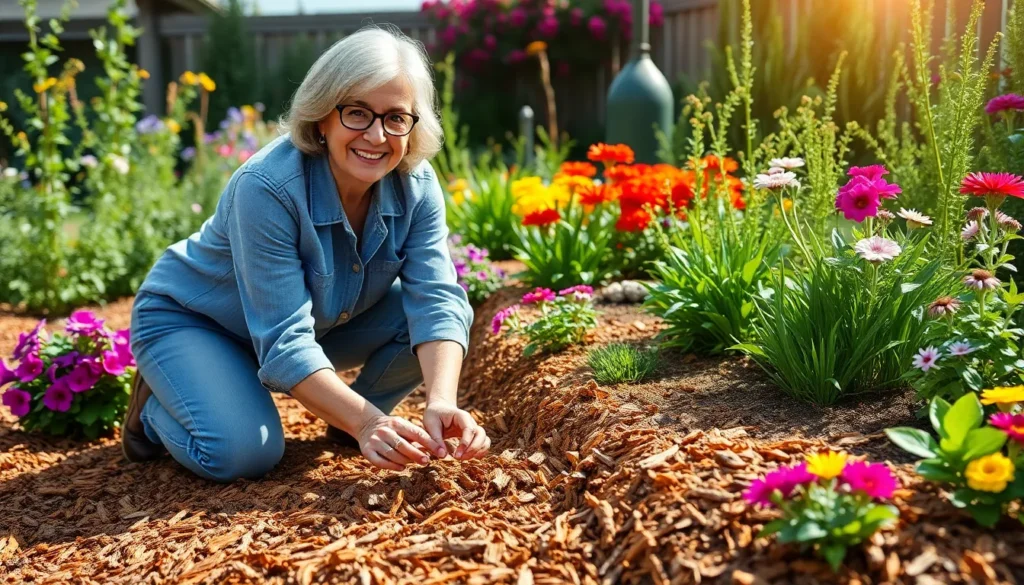We’ve all stood in our gardens wondering how to make our plants thrive while reducing the endless cycle of watering and weeding. Garden mulch is the game-changing solution that transforms your outdoor space into a low-maintenance paradise while boosting plant health dramatically.
The right mulching strategy doesn’t just suppress weeds and retain moisture – it creates a stunning visual foundation that elevates your entire industry design. From organic options like shredded bark and leaf mold to decorative alternatives like colored stones and rubber chips, there’s a perfect mulch solution for every garden style and budget.
We’re about to explore the most effective mulch ideas that’ll revolutionize how you approach gardening. Whether you’re dealing with flower beds, vegetable gardens, or walkways, these proven techniques will save you time, money, and countless hours of maintenance while creating the garden of your dreams.
Organic Wood Mulch Options for Natural Garden Beauty
Wood based mulches offer the perfect blend of functionality and aesthetic appeal that complements any industry design. These natural materials break down slowly to enrich your soil while providing excellent weed suppression and moisture retention.
Shredded Bark Mulch for Long-Lasting Coverage
Shredded bark mulch delivers superior longevity compared to other organic options, typically lasting 2-3 years before requiring replacement. We recommend applying a 2-3 inch layer around shrubs, perennials, and flower beds for optimal performance. This mulch type excels at staying in place during heavy rains and strong winds due to its interlocking fiber structure.
Cedar bark and hardwood bark varieties offer distinct advantages for different garden applications. Cedar naturally repels insects like termites and ants while providing a rich reddish brown color that enhances garden aesthetics. Hardwood bark breaks down more slowly and adds valuable organic matter to clay and sandy soils over time.
Large bark pieces work exceptionally well for slopes and areas prone to erosion since they resist washing away. Fine shredded bark integrates beautifully with formal garden designs and provides excellent coverage around delicate plants without overwhelming smaller specimens.
Wood Chips for Pathways and Tree Bases
Wood chips create attractive walking surfaces while suppressing weeds along garden pathways and around large trees. We suggest using chips that measure 1-3 inches in diameter for the best balance of durability and visual appeal. Fresh wood chips work perfectly for high traffic areas since they compact slightly underfoot to form stable walking surfaces.
Arborist chips from local tree services provide an economical option that often includes a beneficial mix of bark, wood, and leaves. These free materials typically contain various tree species that create interesting color variations and textures throughout your industry. Contact local tree removal companies or municipal services to inquire about free chip delivery programs in your area.
Pine and fir chips offer natural aromatic qualities that enhance the sensory experience of garden strolls. Hardwood chips from oak, maple, or hickory trees provide neutral colors that complement any garden color scheme while breaking down to improve soil structure over 2-4 years.
Sawdust Mulch for Acid-Loving Plants
Sawdust mulch creates ideal growing conditions for acid loving plants like blueberries, azaleas, rhododendrons, and camellias. We apply aged sawdust in thin 1-2 inch layers since fresh sawdust can temporarily reduce soil nitrogen as it decomposes. Cedar and pine sawdust naturally lower soil pH levels while providing excellent moisture retention around shallow rooted plants.
Aged sawdust from furniture makers or sawmills offers the best results since the decomposition process has already begun. This material won’t compete with plants for nitrogen and integrates quickly into existing soil structures. Mix sawdust with compost or leaf mold to create a nutrient rich mulch blend that feeds acid loving plants throughout the growing season.
Fine textured sawdust works particularly well around small plants and in container gardens where larger mulch pieces might overwhelm delicate foliage. This mulch type also excels at suppressing small weed seeds that often germinate in the fine spaces between larger mulch materials.
Living Mulch Ideas Using Ground Cover Plants
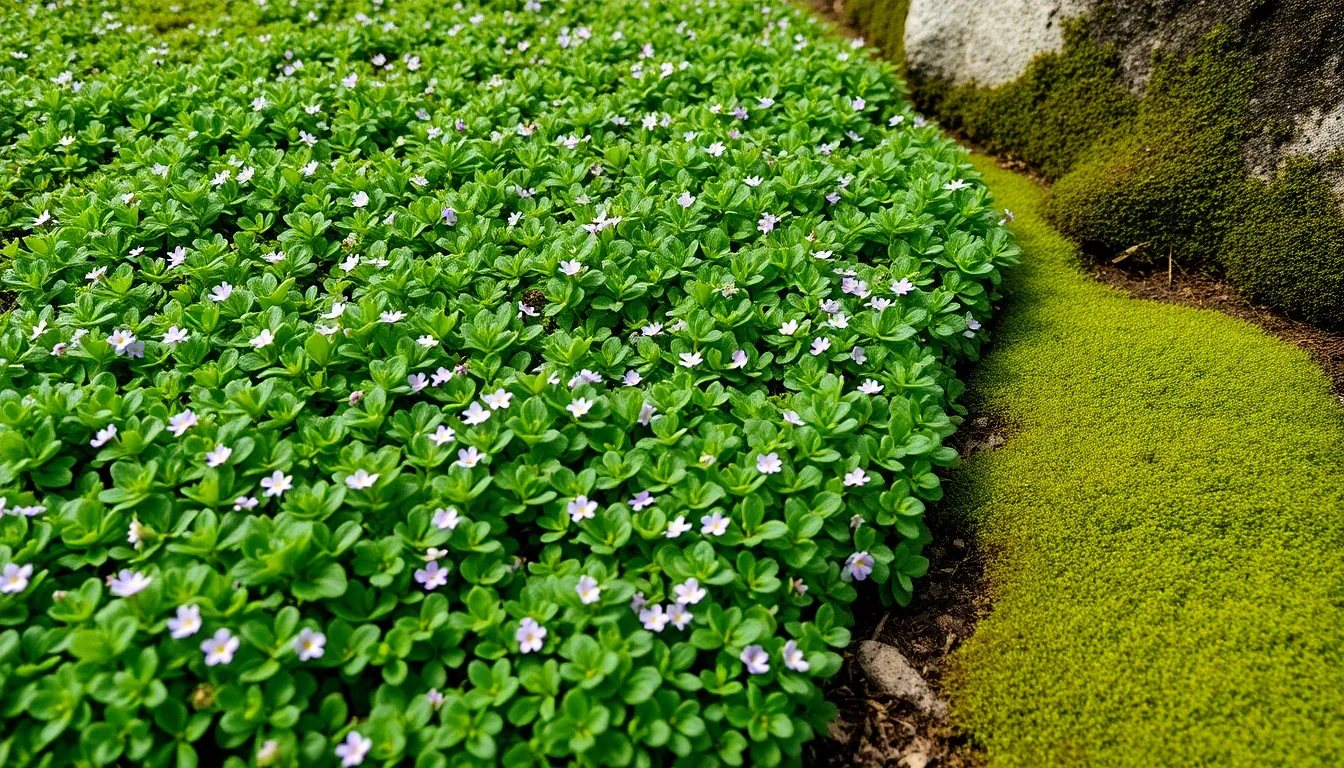
Living mulch transforms traditional gardening by combining the benefits of weed suppression with the beauty of growing plants. We’ve found that ground cover plants serve as ever-changing alternatives to static mulching materials while providing ongoing visual interest.
Creeping Thyme for Fragrant Walkways
Creeping thyme creates aromatic pathways that release delightful scents with every footstep. This fragrant herb thrives in sunny locations and establishes dense mats that effectively suppress weeds without requiring constant maintenance. We recommend planting creeping thyme between stepping stones or along garden borders where foot traffic remains light to moderate.
The plant’s natural drought tolerance makes it perfect for areas where regular watering isn’t practical. Small purple or white flowers appear throughout the growing season, adding seasonal color to your garden design. Most varieties reach only 2-3 inches in height, creating a carpet-like appearance that complements various industry styles.
Clover as Nitrogen-Fixing Ground Cover
Clover functions as nature’s fertilizer factory by converting atmospheric nitrogen into soil-enriching nutrients. This remarkable ground cover plant thrives in poor soil conditions where other plants struggle to establish themselves. We’ve observed that clover’s nitrogen-fixing properties eliminate the need for synthetic fertilizers in many garden areas.
White clover and micro clover varieties work exceptionally well in areas with moderate foot traffic. The plants produce small flowers that attract beneficial pollinators like bees and butterflies to your garden network. Clover’s ability to withstand drought conditions makes it an excellent choice for low-maintenance landscapes that still require living ground coverage.
Moss for Shaded Garden Areas
Moss provides lush green carpeting in areas where traditional grass and ground covers fail to thrive. This ancient plant group excels in moist, shaded environments where other living mulch options struggle with low light conditions. We find that moss requires minimal maintenance once established and creates a natural woodland aesthetic.
Different moss species adapt to various moisture levels and soil types, making them versatile options for challenging garden spots. The plants help retain soil moisture while preventing erosion on slopes and around tree bases. Moss also serves as an indicator of soil health and environmental conditions, giving us valuable insights into our garden’s network balance.
Stone and Mineral Mulch Solutions for Low-Maintenance Gardens
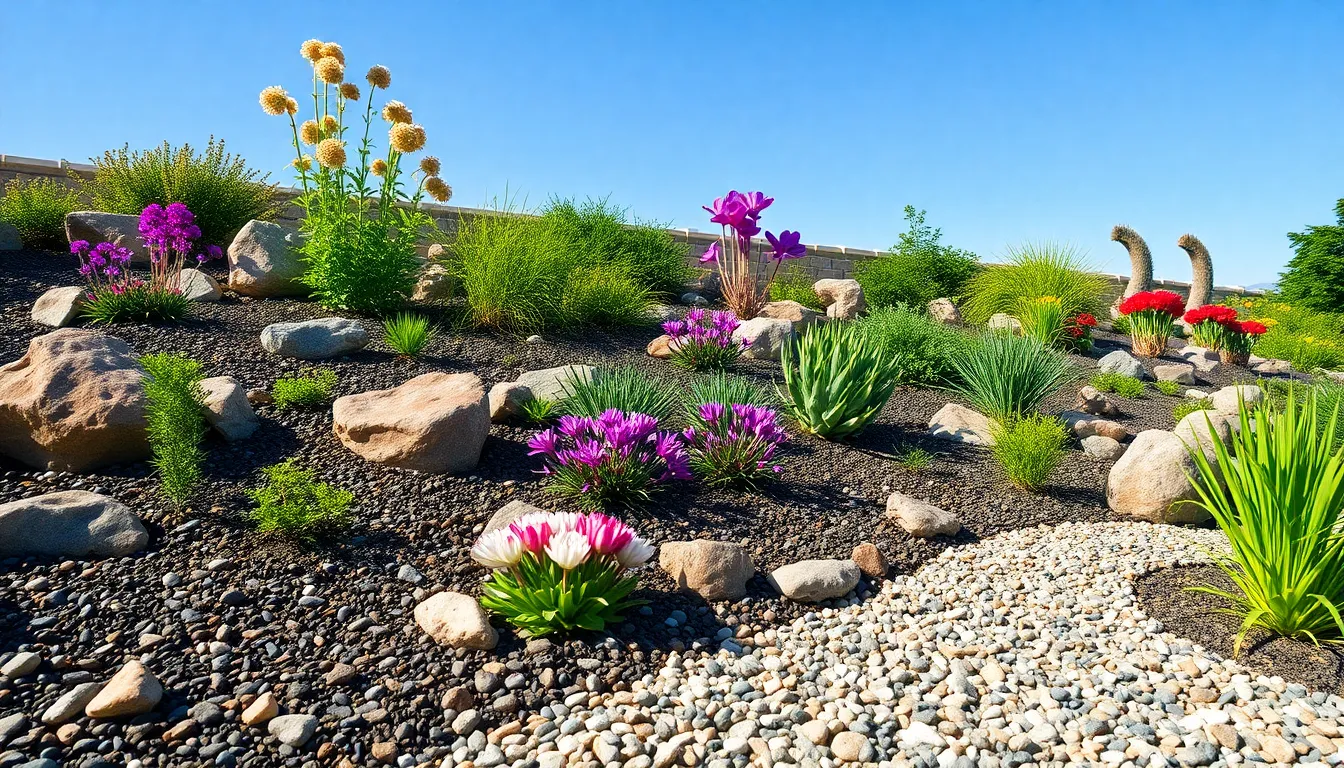
Stone and mineral mulches provide permanent, durable ground cover that eliminates the need for frequent replacement or maintenance. These inorganic options resist decomposition, discoloration, and erosion while maintaining their visual appeal for years.
Gravel Mulch for Drought-Tolerant Landscapes
Gravel mulch excels in xeriscape gardens and water-restricted areas where drought tolerance takes priority. This mulch type retains soil moisture by reducing evaporation and creates an effective barrier against weed emergence. Various sizes and colors make gravel mulch adaptable to different design preferences while maintaining its cost-effective nature over time.
Regional gardeners dealing with arid conditions find gravel mulch particularly valuable since it eliminates frequent irrigation needs. Small pea gravel works well around perennial plantings, while larger decorative stones complement succulent gardens and desert landscaping themes.
River Rock for Modern Garden Design
River rock mulch delivers contemporary aesthetics with its naturally smooth, rounded texture that creates clean visual lines. Modern garden designs benefit from river rock’s consistent appearance and minimal maintenance requirements. High-traffic areas and sloped gardens receive excellent erosion protection from this naturally water-resistant mulch option.
Clean, structured borders emerge when river rock defines planting beds and pathway edges. Asian-inspired gardens and minimalist landscapes showcase river rock’s ability to complement architectural elements while requiring virtually no upkeep throughout the growing season.
Crushed Stone for Herb Gardens
Crushed stone provides exceptional drainage and weed suppression specifically suited for herb cultivation needs. Angular stone pieces settle firmly to create stable walking surfaces while preventing soil compaction from regular harvesting activities. Raised herb beds and structured borders benefit from crushed stone’s neat, organized appearance.
Temperature regulation becomes more consistent when crushed stone maintains steady soil conditions around herb plantings. Mediterranean herbs like rosemary, thyme, and oregano thrive in the well-draining environment that crushed stone mulch creates without adding organic matter that these plants typically don’t require.
Recycled Material Mulch Ideas for Eco-Friendly Gardening
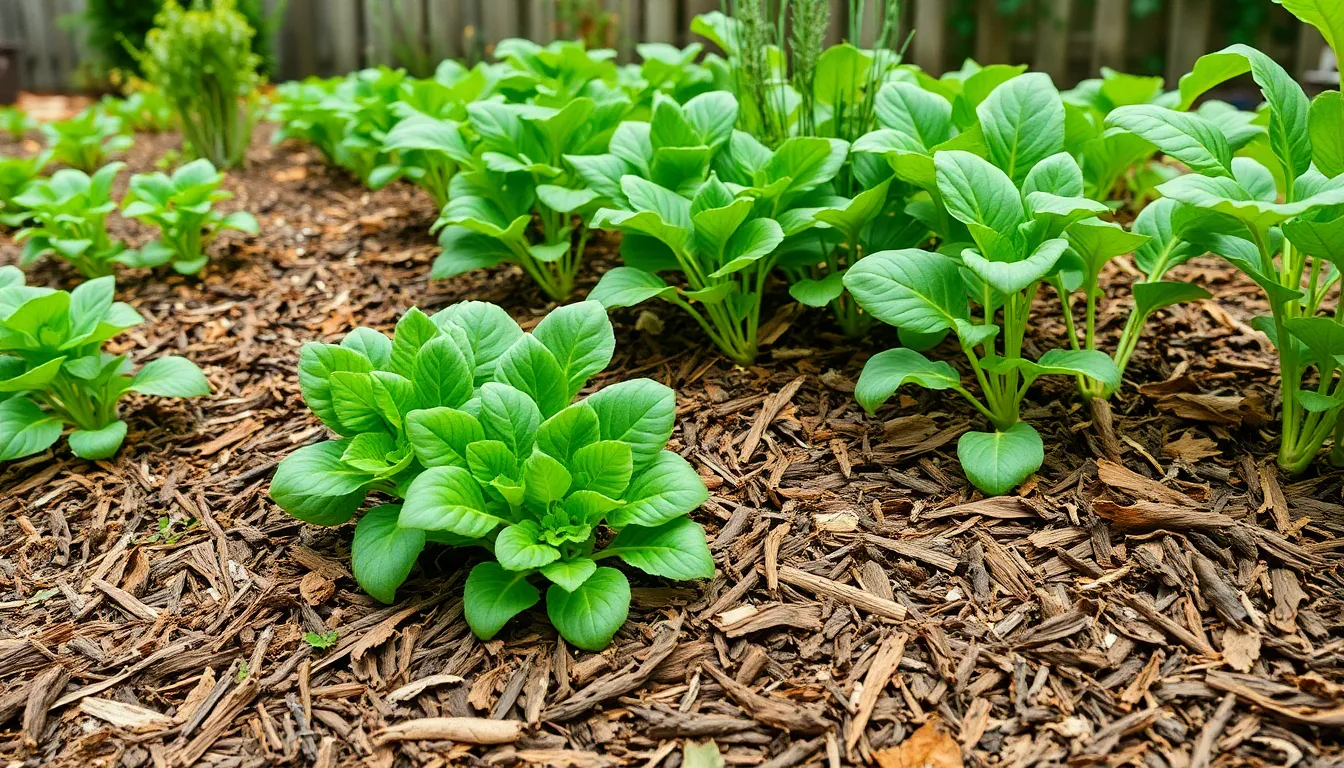
Sustainable gardening practices help us reduce waste while creating beautiful, healthy outdoor spaces. Recycled mulch materials transform everyday items into valuable garden resources that support plant health and environmental conservation.
Newspaper and Cardboard Sheet Mulching
Newspaper and cardboard create highly effective sheet mulch systems that block sunlight and prevent weed growth naturally. We recommend applying 4-6 sheets of newspaper or flattened cardboard pieces directly onto the soil surface before adding organic mulch layers on top.
Decomposition occurs gradually over time, adding beneficial organic matter to improve soil structure and fertility. Choose newspapers and cardboard materials free from colored inks, glossy coatings, and synthetic adhesives to ensure safe soil integration. Water the paper materials thoroughly after installation to help them conform to the ground and begin the breakdown process.
Grass Clippings for Vegetable Gardens
Grass clippings provide nutrient-rich mulch that costs nothing and delivers excellent results in vegetable growing areas. Apply thin layers of 1-2 inches around plants to maintain proper air circulation while retaining soil moisture and suppressing competitive weeds.
Fresh clippings decompose rapidly, releasing nitrogen that feeds plants naturally and enhances soil fertility throughout the growing season. Use only untreated grass clippings from lawns free of herbicides, pesticides, and chemical fertilizers to protect vegetable crops from contamination. Allow thick clippings to dry slightly before application to prevent matting and potential plant damage.
Fallen Leaves as Free Seasonal Mulch
Fallen leaves offer abundant, cost-free mulching material that transforms autumn cleanup into valuable garden resources. Shredded leaves work more effectively than whole leaves, decomposing faster while improving soil structure, moisture retention, and beneficial microbial activity.
Apply 2-3 inch layers around established plants or use leaves as protective winter coverings for perennial beds and sensitive plantings. Leaf mulch creates diverse habitats that support soil biodiversity while remaining completely environmentally safe and sustainable. Collect leaves from areas free of road salt, pet waste, and chemical treatments to maintain garden health and safety standards.
Specialty Mulch Options for Specific Plant Needs
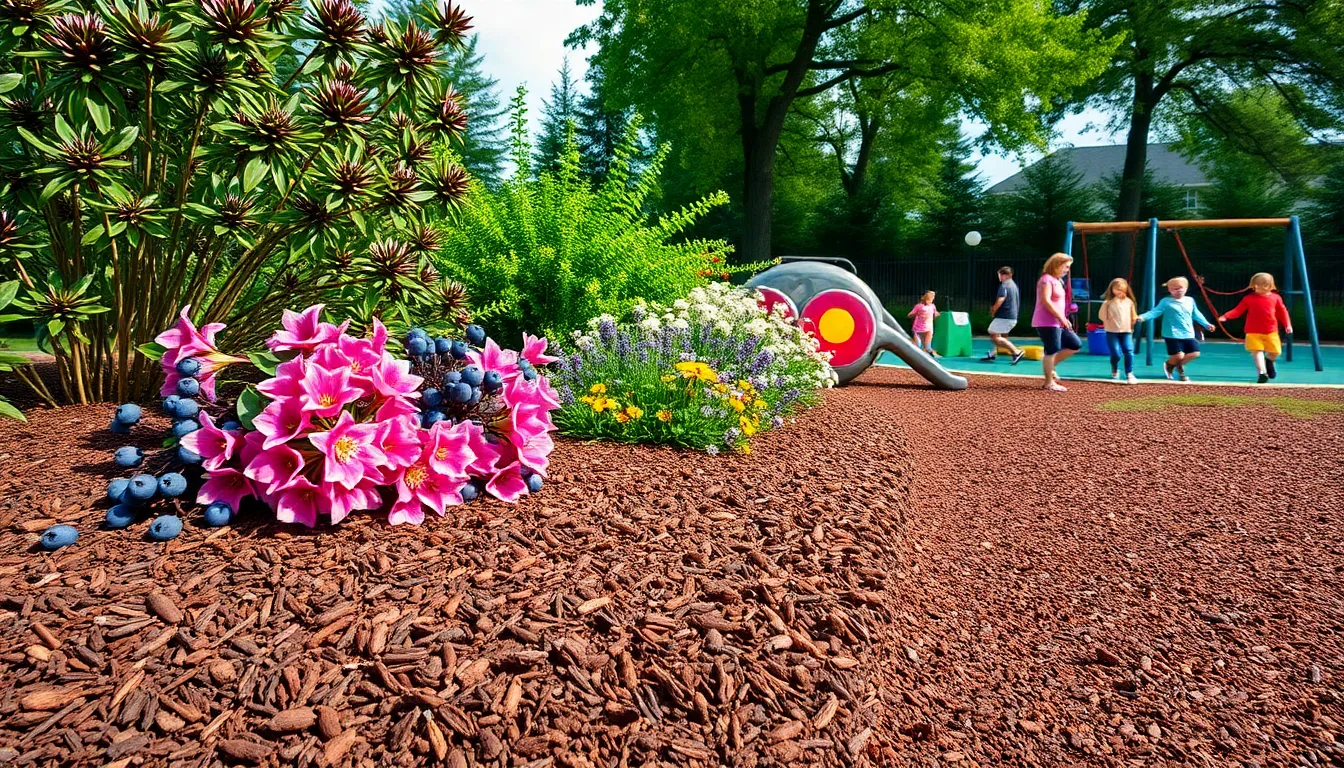
Some plants thrive with specialized mulching materials that address their unique growing requirements. We’ll explore targeted mulch answers that support exact plant types and garden areas.
Pine Needles for Azaleas and Blueberries
Pine needles create the perfect acidic environment for acid-loving plants like azaleas, rhododendrons, and blueberries. We recommend using pine needle mulch because it naturally maintains soil pH levels between 4.5 and 5.5, which blueberries specifically require for optimal growth. This organic mulch provides excellent insulation for shallow root systems, particularly benefiting azaleas and rhododendrons that need consistent moisture retention. Pine needles also suppress weeds effectively while allowing proper air circulation around plant bases, making them ideal for these sensitive garden favorites.
Cocoa Hull Mulch for Ornamental Beds
Cocoa hull mulch transforms ornamental beds with its rich chocolate appearance and pleasant natural aroma. We find this specialty mulch particularly effective for flower gardens and decorative industry areas where visual appeal matters most. Cocoa hulls retain moisture exceptionally well while providing natural weed control, creating an elegant backdrop for colorful blooms. But, we must caution pet owners that cocoa hull mulch can be toxic to dogs and cats if ingested, so consider alternative options if your furry friends frequent these garden areas.
Rubber Mulch for Playground Areas
Rubber mulch offers superior safety features for children’s play areas with its shock-absorbing properties and soft landing surface. We appreciate this mulch option for its resistance to pests, decay, and weather conditions, making it a long-lasting investment for playground spaces. This non-organic material provides consistent cushioning that traditional wood mulches can’t match, reducing injury risks from falls. While rubber mulch costs more initially than organic alternatives, it doesn’t decompose or require regular replacement, making it economical for high-traffic recreational areas.
Creative DIY Mulch Ideas from Household Items
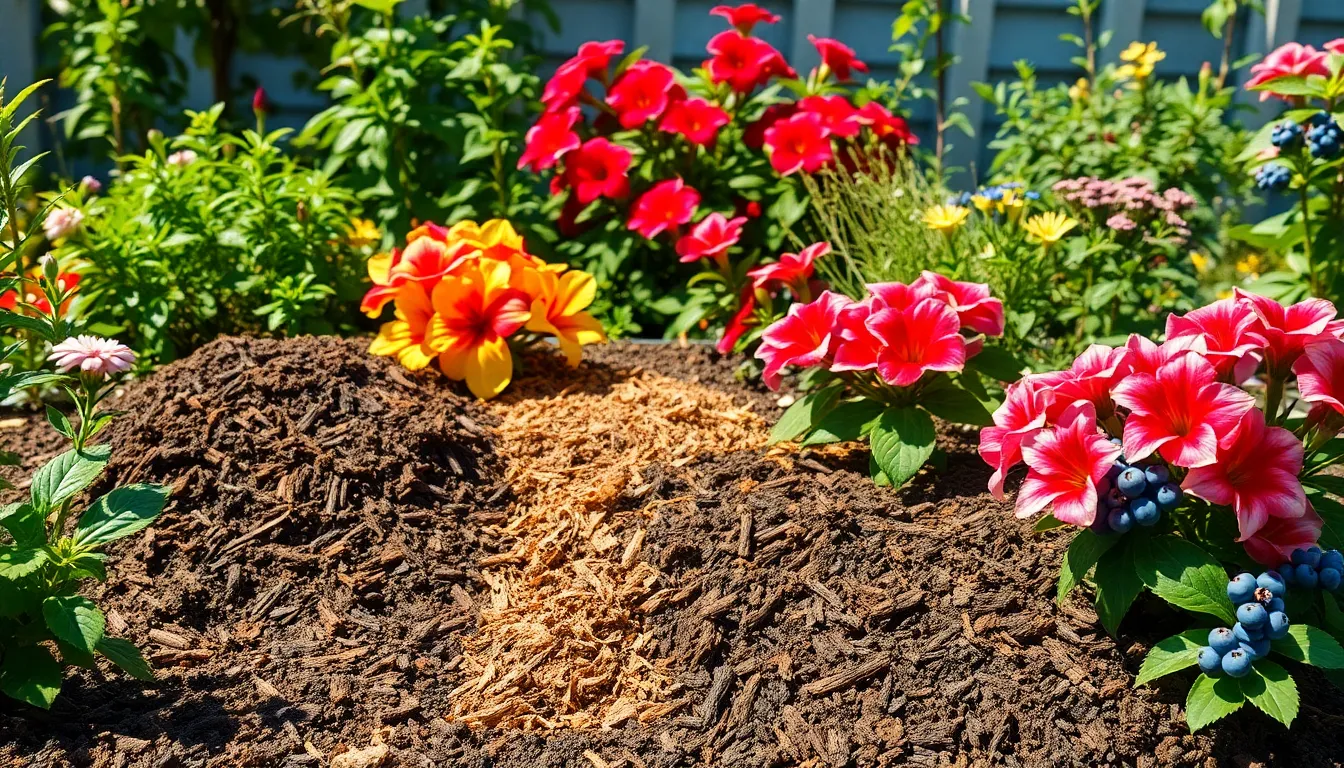
Transforming common household items into effective garden mulch offers an eco-friendly solution that saves money while reducing waste. We’ll explore several accessible options that provide excellent soil benefits using materials you likely already have at home.
Coffee Grounds Mixed with Organic Matter
Coffee grounds create an exceptional mulch for acid-loving plants like azaleas, blueberries, and hydrangeas. We recommend mixing used coffee grounds with coarser materials such as shredded leaves to improve soil aeration and prevent compaction.
Benefits of this mixture include excellent moisture retention and steady nitrogen release as the grounds decompose. Plants that thrive in acidic conditions particularly benefit from the pH-lowering properties coffee grounds provide. Adding these grounds to your garden creates a sustainable way to recycle daily coffee waste while nourishing your plants.
Shredded Paper for Temporary Coverage
Shredded paper serves as an effective temporary mulch solution for suppressing weeds and retaining soil moisture. We find this biodegradable option particularly useful for seasonal garden projects where short-term coverage is needed.
Newspaper and office paper work best when shredded into strips and applied in thin layers around plants. Combining shredded paper with other organic materials increases its durability and prevents it from blowing away in strong winds. Water the paper lightly after application to help it settle and begin the decomposition process.
Compost as Nutrient-Rich Mulch
Compost functions as both mulch and fertilizer, making it one of the most valuable materials for garden health. We appreciate how this nutrient-rich organic matter enhances soil fertility while providing all the traditional mulching benefits.
Temperature regulation becomes more effective with compost mulch, as it acts as a natural buffer against extreme heat and cold. Soil moisture retention improves significantly when we apply a 2-3 inch layer around plants, reducing the need for frequent watering. The living organisms within compost continue to break down and feed the soil, creating a self-sustaining system that supports robust plant growth throughout the growing season.
Seasonal Mulch Ideas for Year-Round Garden Protection
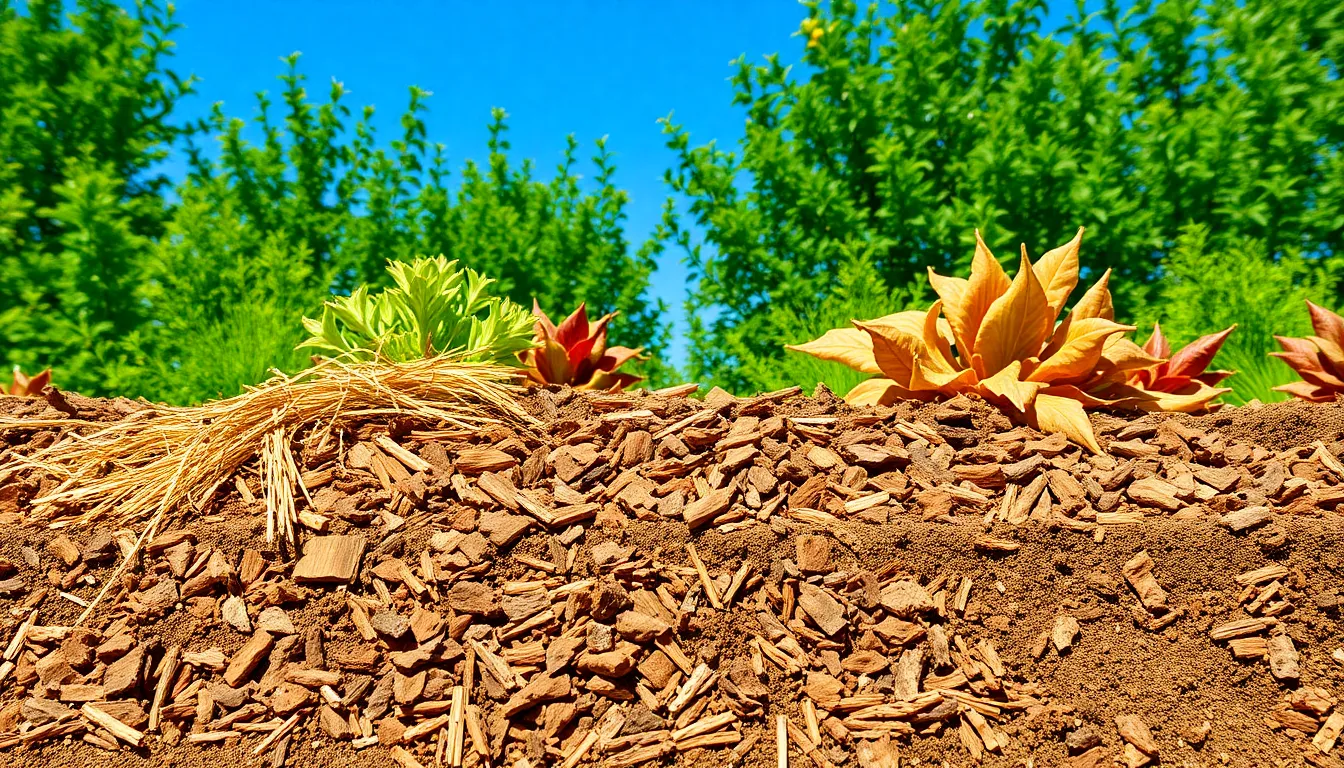
Adapting our mulching strategy throughout the seasons ensures our gardens remain healthy and protected no matter what weather conditions arise. Different times of the year require exact mulching approaches to maximize plant health and garden performance.
Summer Heat Protection Strategies
Light colored mulches become our best allies during scorching summer months. We should apply straw or wood chips in 2 to 3-inch layers to reflect sunlight away from soil surfaces and dramatically reduce ground temperatures. These materials excel at retaining precious moisture while simultaneously suppressing stubborn weeds.
Reflective mulching strategies help our plants survive extreme heat stress. We can choose from materials like shredded bark, pine straw, or even light colored gravel to create cooling zones around sensitive plantings. The key lies in maintaining consistent moisture levels beneath the mulch layer, which reduces watering frequency and protects root systems from temperature fluctuations.
Winter Insulation Techniques
Thicker mulch applications ranging from 4 to 6 inches provide essential insulation during harsh winter conditions. We should focus on organic materials like pine bark, shredded leaves, or wood chips that create protective barriers around plant crowns and root zones. These substantial layers moderate soil temperatures and prevent harmful freeze-thaw cycles that damage delicate root systems.
Winter mulching serves dual purposes by retaining soil moisture and protecting against frost damage. We need to apply these protective layers before the first hard freeze to maximize their effectiveness. Organic mulches gradually decompose throughout winter, slowly releasing nutrients that become available for spring growth spurts.
Spring Preparation Methods
Fresh mulch renewal becomes crucial as we transition from winter dormancy to active growing seasons. We should remove weathered or matted mulch layers and replace them with clean materials that support vigorous spring growth. This refresh maintains both soil health and visual appeal while preparing garden beds for the upcoming planting season.
Organic mulches like shredded leaves and grass clippings decompose rapidly during spring warming periods. We can incorporate these materials to enrich soil structure while providing immediate weed suppression benefits. Quick decomposing mulches deliver nutrients directly to awakening root systems, supporting robust plant development throughout the growing season.
Conclusion
We’ve explored many mulching options that can transform your garden into a thriving low-maintenance industry. From organic wood chips to living ground covers and recycled materials each approach offers unique benefits for different garden styles and budgets.
The key to successful mulching lies in matching the right material to your exact plants and environmental conditions. Whether you’re protecting acid-loving plants with pine needles or creating drought-tolerant landscapes with gravel the perfect mulch solution exists for every gardening challenge.
By implementing these mulching strategies you’ll spend less time weeding and watering while enjoying a more beautiful and sustainable outdoor space. Start with one area of your garden and gradually expand your mulching efforts to experience the long-term benefits we’ve discussed.
Frequently Asked Questions
What is garden mulch and why is it important?
Garden mulch is a protective layer of material spread around plants and over soil. It suppresses weeds, retains moisture, regulates soil temperature, and enhances garden aesthetics. Mulch reduces maintenance time while creating healthier growing conditions for plants, making it essential for both novice and experienced gardeners.
What are the best organic mulch options for my garden?
Shredded bark mulch offers excellent longevity and weed suppression, while cedar bark provides natural pest resistance. Wood chips work well for pathways and tree bases, and aged sawdust is perfect for acid-loving plants. Each organic option decomposes naturally, enriching your soil over time.
Can I use living plants as mulch?
Yes! Living mulch includes ground cover plants like creeping thyme for fragrant pathways, clover for nitrogen-rich soil enhancement, and moss for shaded areas. These options provide continuous weed suppression while adding beauty and requiring minimal maintenance once established.
What are the benefits of stone and mineral mulches?
Stone and mineral mulches like gravel, river rock, and crushed stone offer exceptional durability and low maintenance. They’re perfect for drought-tolerant landscapes, provide excellent drainage, suppress weeds effectively, and create modern aesthetic appeal while lasting for years without replacement.
How can I create eco-friendly mulch from recycled materials?
Use newspaper or cardboard as sheet mulch topped with organic material, apply grass clippings around vegetables for nutrients, or collect fallen leaves for free seasonal coverage. Coffee grounds mixed with organic matter work well for acid-loving plants, creating sustainable solutions.
What specialty mulches work best for specific plant needs?
Pine needles are ideal for acid-loving plants like azaleas and blueberries. Cocoa hull mulch enhances ornamental beds with rich color and chocolate scent. Rubber mulch provides safe, durable coverage for playground areas with excellent shock absorption and longevity.
How should I adjust my mulching strategy by season?
Summer requires light-colored mulches like straw to reflect heat and retain moisture. Winter needs thicker organic layers for plant insulation. Spring calls for refreshing mulch with rapidly decomposing materials to support new growth and suppress emerging weeds effectively.
Can I make effective mulch from household items?
Absolutely! Shredded paper works for temporary coverage, coffee grounds benefit acid-loving plants when mixed with organic matter, and homemade compost provides nutrient-rich mulch. These DIY options save money while reducing household waste and supporting sustainable gardening practices.

